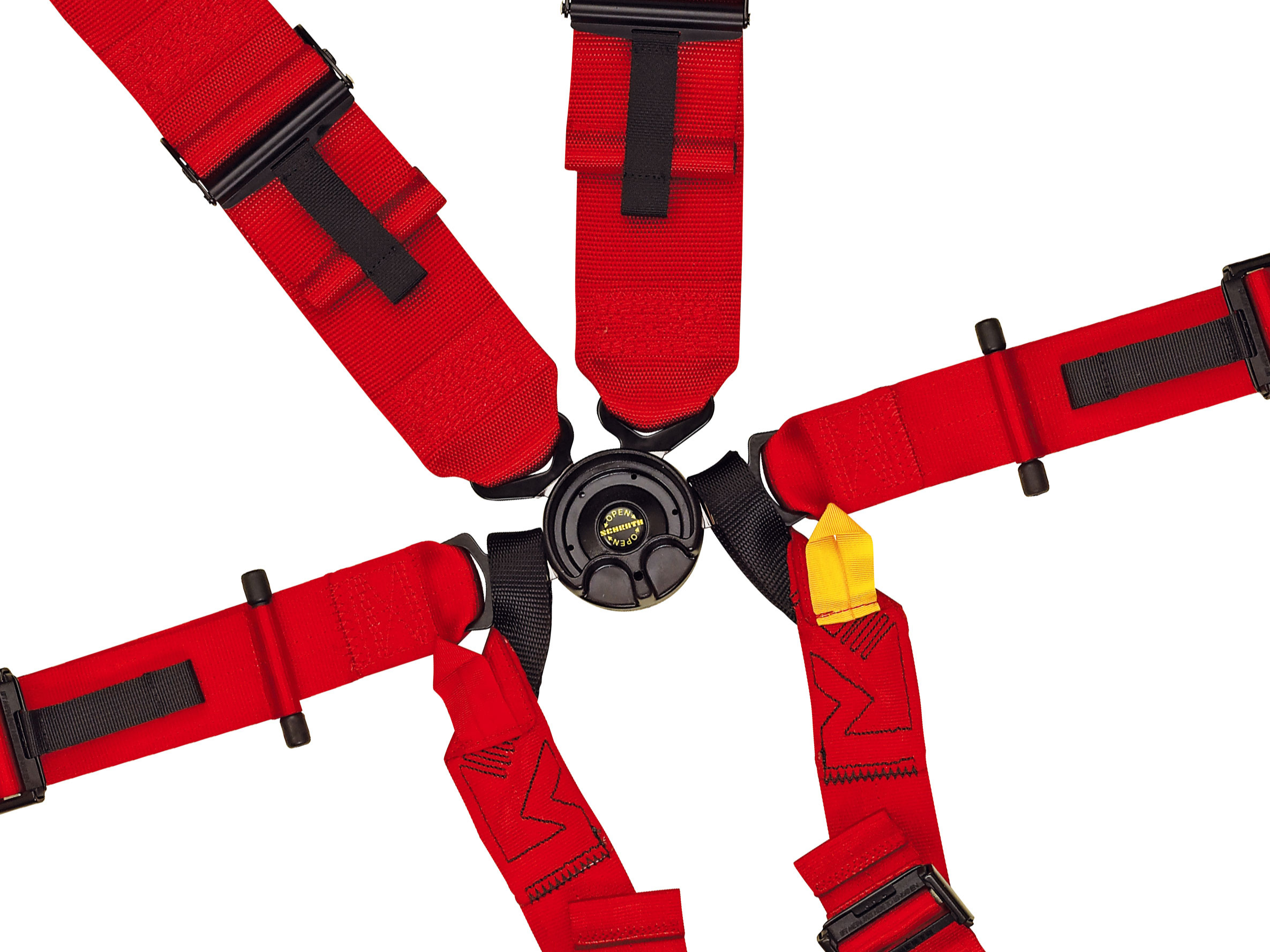The so called T-bar 6-point belt design provides a better restraining function since the anti-sub straps can be routed downward following approximately a chest/crotch tangential. This keeps the buckle in place and provides direct load transfer from the shoulder straps into the anti-sub straps. During a rear impact the anti-sub straps keep the buckle and lap belt in place and restrain the driver much better in the seat.
The disadvantage of this type of harness: the T-bar should be wide enough to properly separate the anti-sub straps but is then likely to stick into the upper thighs. To increase the comfort, the buckle is often not worn as low as it should for best lap belt positioning.
The solution: the revolutionary SCHROTH Hybrid™ Restraint.
The crotch straps are not routed through D-rings or attached to a T-Bar but are held directly by the specially developed lap belt latches.Thanks to the patented SCHROTH RFR™ rotary buckle the load tranfer from the shoulder belts through the buckle into the anti-sub straps and vice versa in case of a rear impact is achieved. This direct load transfer is important for optimal restraining performance.
